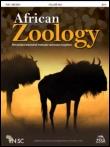The objectives of this study were to describe movements and area use patterns of largemouth bass Micropterus salmoides in relation to abiotic factors (water temperature, river inflow and water level). The study was conducted in the Kubusi arm of Wriggleswade Dam, Eastern Cape, South Africa where nine largemouth bass (310–385 mm FL) were surgically implanted with individually coded acoustic transmitters and monitored for nine months (May 2010 to January 2011) using an array of five moored acoustic data-logging receivers. The daily position occupied by largemouth bass was significantly affected by water temperature (P < 0.001) and river inflow (P < 0.001), whereas water level had no effect. Largemouth bass spent little or no time in the shallow river inlet areas when water temperature was <12.5 °C, but as water temperature increased, their utilisation of shallow areas increased significantly. The results from this study demonstrate the importance of environmental factors, particularly water temperature, on the movement of largemouth bass.
How to translate text using browser tools
1 October 2016
Movement Behaviour of Largemouth Bass Micropterus salmoides in a South African Impoundment
Dylan H Howell,
Paul D Cowley,
Amber-Robyn Childs,
Olaf LF Weyl
ACCESS THE FULL ARTICLE

African Zoology
Vol. 50 • No. 3
October 2015
Vol. 50 • No. 3
October 2015
acoustic telemetry
alien invasive
ecology
flow
temperature




